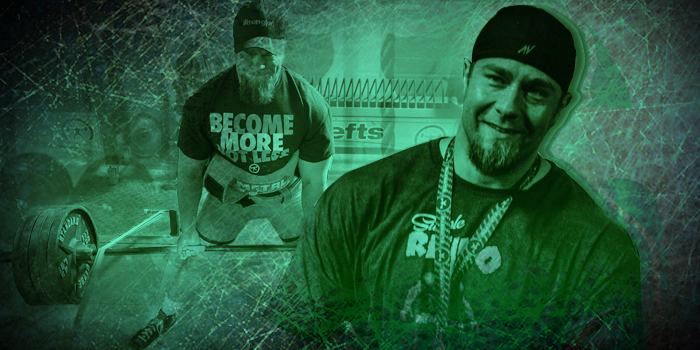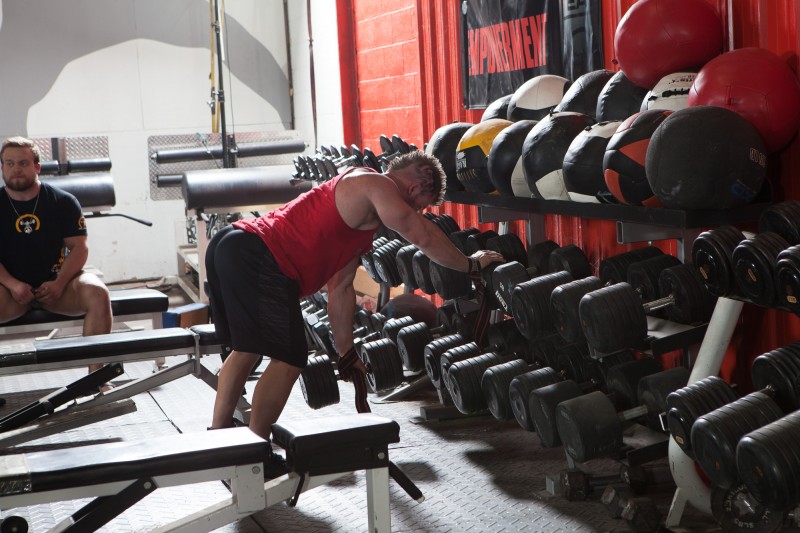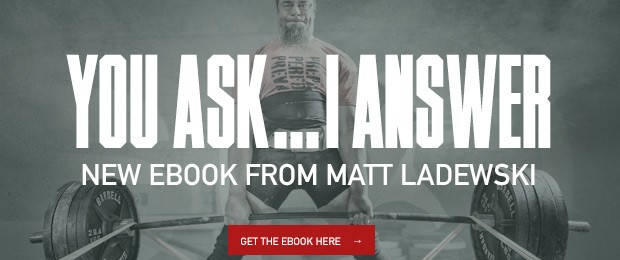
How many main workouts do you do a week? Three? Four? Six? Your number of main workouts may be different from someone else, but to move those next five pounds you may need to fill in some missing pieces. To fill in those missing pieces you might need to add in some extra workouts. The problem is that many don’t understand what those workouts should actually look like. Training is stress and it must be structured appropriately. If you are looking to move up the ranks then extra workouts are the way to add extra volume, bring up weak muscle groups, and improve your general physical preparedness (GPP), mobility, flexibility, and body composition. Though extra workouts seem simple enough, there are some rules that need to be followed. These rules should be adhered to if you want to avoid doing more harm than good.
Not Detrimental to Main Workouts
The first and most important rule for extra workouts is that they can’t hurt your main workouts. If you are trying to bring up your hamstrings with some extra sled dragging but you can’t recover before your next squat workout then you are doing more harm than good. Extra workouts can be done the day before or the day after a main workout. Where the workout falls will determine how much work you can do. But if you find yourself struggling during your main workouts, you might need to dial it back a bit. If you are new to implementing some extra work, I recommend starting with one per week. After a few weeks, you can add in a second. As your GPP levels improve you will be able to do more and more work.
The 60% Rule
The 60% rule is very simple and straightforward: when doing multiple extra workouts between main sessions, each sequential workout will need a decrease in the weight by 60%. If you sled drag 100 pounds 24 hours after a lower body workout, and want to do more sled dragging 48 hours after your workout, you should drop the sled weight to 40 pounds. You would then be ready for your next lower body workout at 72 hours. This type of volume-reducing scheduling will keep you fresh while allowing you do even more workouts. This goes for any exercise you want to include in your extra workouts.
Be Like Dominoes
These workouts are in addition to your main workout and, as stated above, shouldn’t be detrimental. To help control this, you want to keep them under 30 minutes. That short of a timeframe should keep you moving. A continuous, non-stop workout will help improve body composition, GPP, and help you focus you on the task at hand. No matter what you do for your extra sessions, get in and out in under 30 minutes. Walk out wanting to come back for more at another time. Get in, do your work, and get out.
Types of Extra Workouts
There are many ways to implement extra sessions. Every person has personal needs. You might be like me and need to take care of your beat-up body with some recovery work. Others might be rehabbing an injury, need to focus on cardio and health, or just want to bring up a weak point. There is no wrong answer as long as it makes you better. No matter if you want to recover better or fill in the gaps, the key is to make your main workouts better.
Recovery Workouts
This category is in place to help you feel better. Mobility, flexibility, foam rolling, and even naps fall into this category. You read it right; I said naps. A short nap on your lunch break will help you quite a bit. This type of workout will leave you feeling better when you are done.
Sample:
- Sled Drag — 10 minutes
- Foam Roll — 10 minutes of hamstrings, calves, quads, glutes, and upper back
- Stretch — 5 minutes of lats, pecs, calves, and hip flexors
Rehab
At some point in life, shit just starts to hurt. It doesn’t even have to be from something you did; you just hurt. Some days you just feel old. Rehab extra workouts are done so you can actually still train. Achy joints and poor mobility can make your main workouts a nightmare. Spending time doing those exercises that keep your shoulders and hips mobile is a great investment of your time.
Sample:
- Band Over-and-Backs — 3-4 x 5
- External Rotation — 4 x 20 each arm
- Thoracic Mobility— 4 x 12 each side
- Fire Hydrants — 4 x 10
- Scapular Push-Ups — 3 x 12
- Bird Dogs — 4 x 12
- Stir the Pot — 4 x 12
- Dead Bugs — 4 x 8 each side
GPP
You need a large base to do a large amount of work. Being able to do work and still recover is important for continual progress. Adding in extra GPP workouts will help build that base and can reduce some of the soreness from the previous workout. My favorite workouts in the category involve a dragging sled, medicine balls, or a Prowler, but could be as simple as a brisk walk wearing a weight vest. This is also where most of my extra work falls.
Example 1:
- Sled Belt Dragging — 1 plate x 1 mile
Example 2:
- Medicine Ball Slams x 10
- Manual Treadmill x 100 steps
- Kettlebell Swings x10
- Leg Raises x 10
- Repeat in circuit fashion
Example 3:
- Jump Rope x 100
- Prowler Backward Walk x 30 yards
- Plank x 30 seconds
- Prowler Forward Walk x 30 yards
- Plank x 30 seconds
- Repeat in circuit fashion
Gap Workouts
Gap workouts are used to fill in the items that may have been missed or skipped during a main workout. Ab work, biceps, upper back work, and other small muscle groups would normally fall here. Bodyweight exercises are a great choice and can be done both in and out of the gym.
Example 1:
- Lunges x 12 each side
- Push-Ups x 15
- Fat Man Rows x 20
- Hammer Curls x 12 each side
- Leg Raises x 20
- Repeat in circuit fashion for four total rounds
Example 2:
- Face Pulls — 4 x 20
- Barbell Curls (Three-Count Eccentric) — 4 x 12
- Dips — 4 x 8
- Dumbbell Power Cleans — 3 x 20
Extra workouts can be very beneficial for almost every lifter. With the right choices and some effort, you can make the best of those short sessions. As long as you follow the rules laid out in this article you should recover and be ready for every main session. You can’t bargain down the price of success; you must do the work.












1 Comment